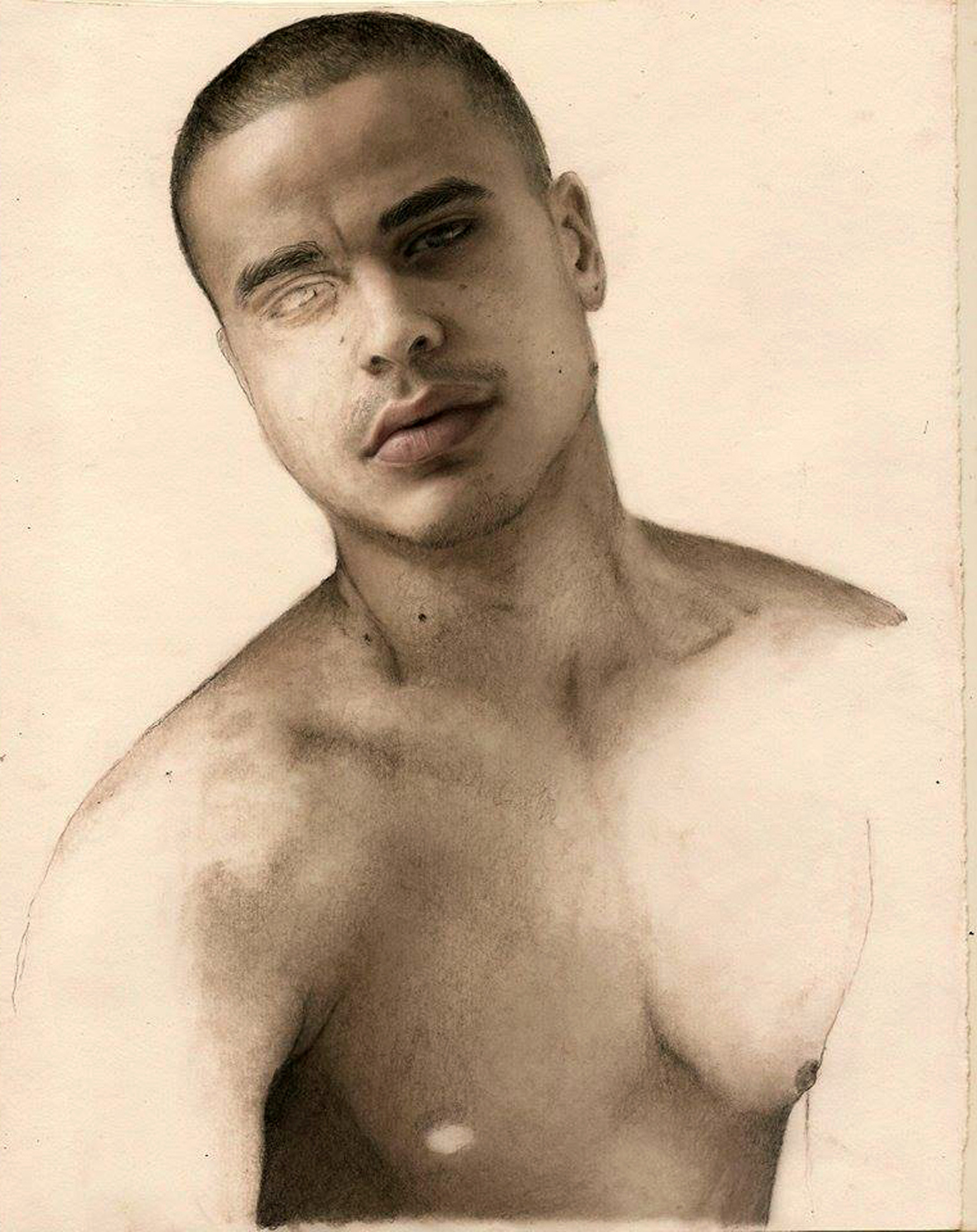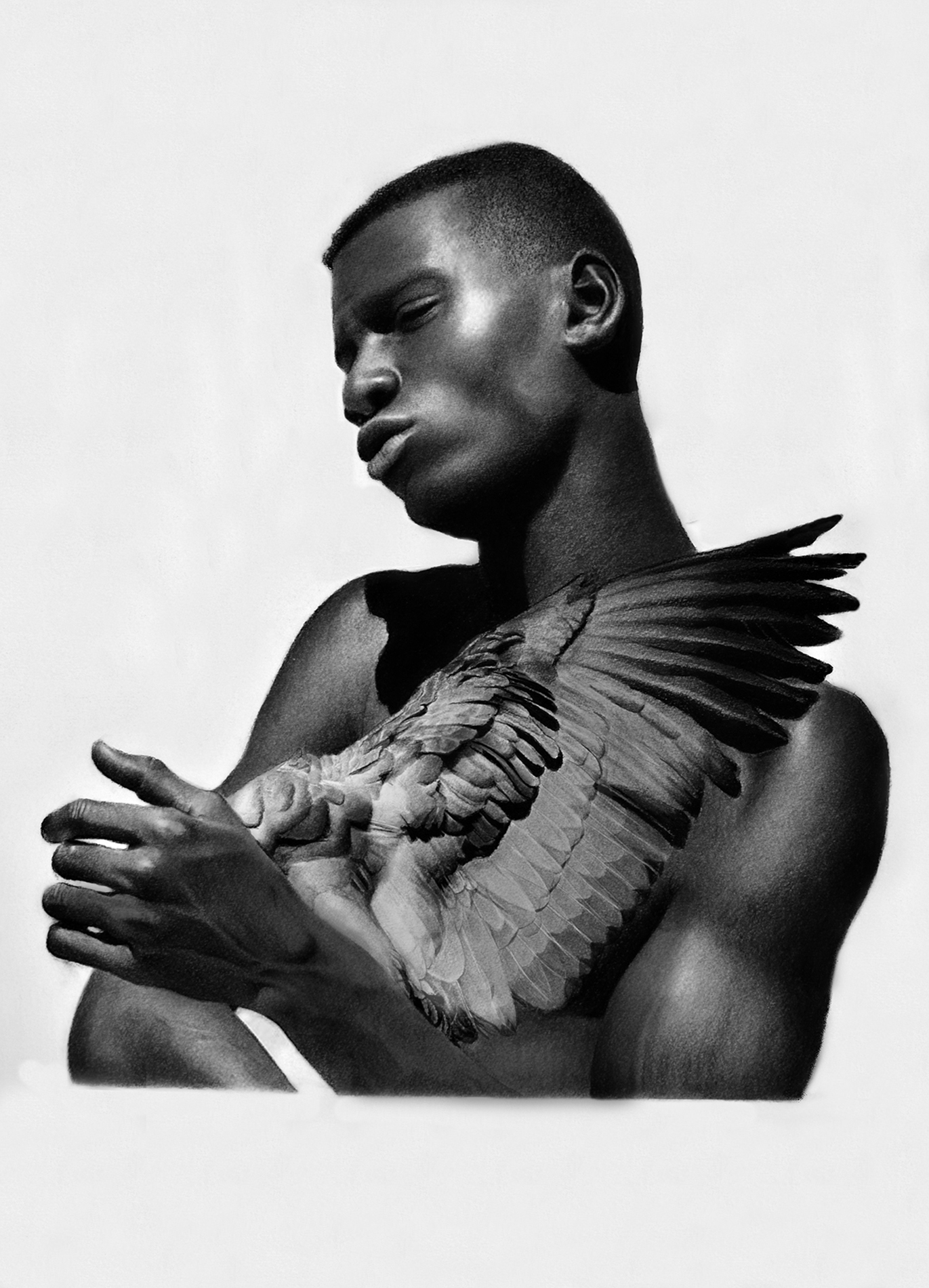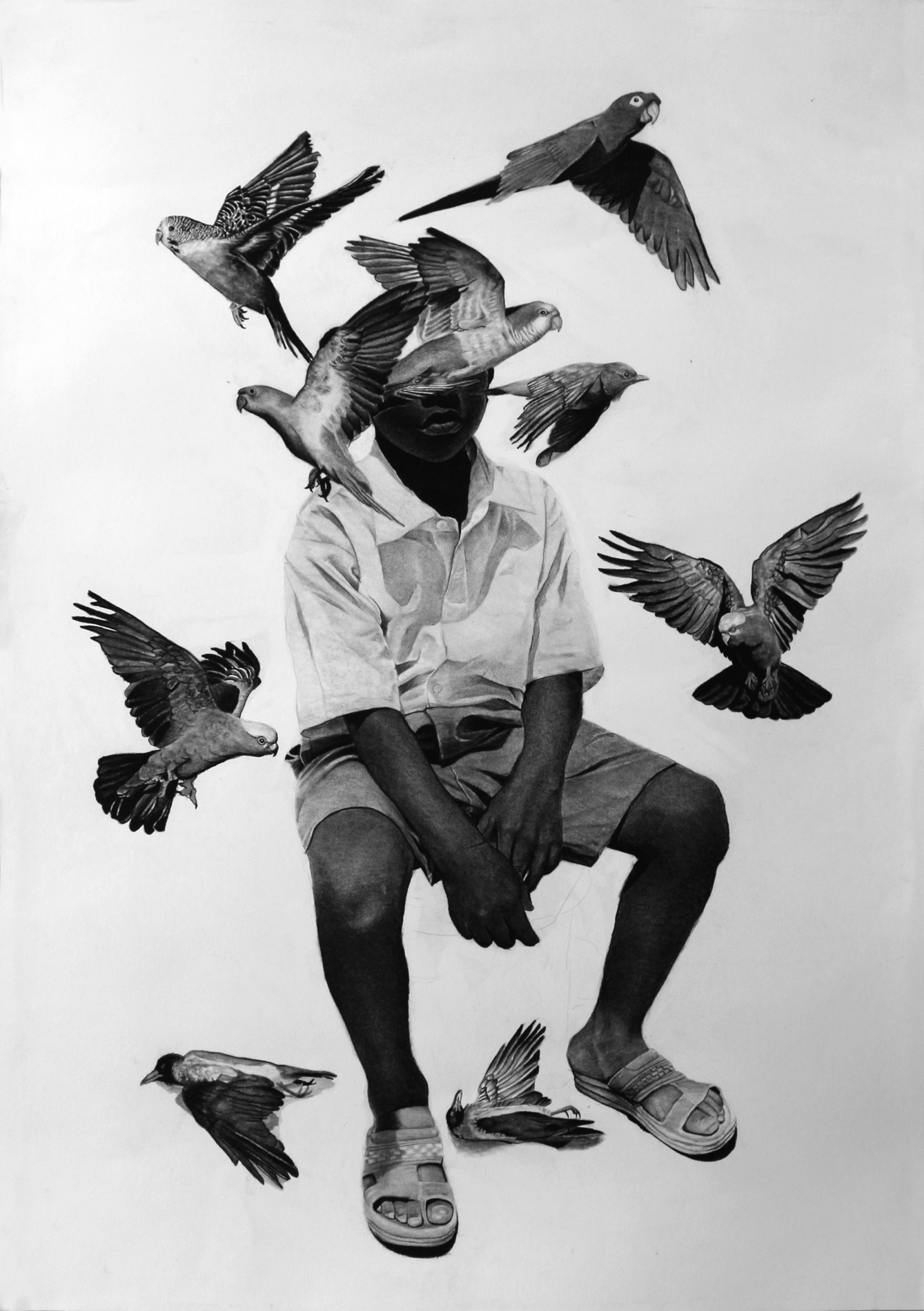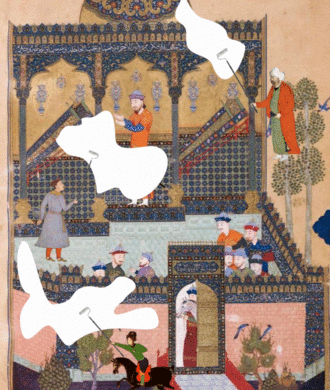Ritchelly Oliveira, Lucunas in the mind
Oliviera is the real star of his hyper-realistic drawings. His every touch infusing a renaissance richness to parched paper. It is here that he manoeuvres negative spaces into his compositions to keep the context of his masterful hand constantly alive in the beholder’s eye.
The empty outlines, the indifferent textures and the rich subtleties of his portraitures court each other in a captivating embrace. Oliviera’s art is also in the moments he captures. Like a surrealist, he conjures up visions and places them in his canvas with the fierce sensuality of a graffiti artist – ready to take a stand, tell a story, make an impact. His moments have intimacy and vulnerability that scales his narrative. This series aptly termed Lucunas fits into his reflection on the negative space. The negative space creates the perfect duality to his realism. He extends that to issues that matter to his artistic explorations. Today, it anchors on the black movement.
The Brazilian artist states “For a long time, my work has been focused on my affective experiences, on how I have dealt with, and I continue to deal with these breaks, breaks, and cuts that we have in our loving and affective lives. But, I got to the point that it was no longer enough; just this personal speech. I needed to amplify these experiences, to bring the voice of others. In 2015, I started a series called “Gaps” where I invited people to portray together with a testimonial about their conception of what love is, and how their affective disruptions affected their lives at that time. But today, my artistic speech is more connected to the black movement, and I believe that this entrance to the black movement came very organically after this reflection. And with everything that has been happening on the social, political scene in Brazil – but not only in Brazil, in the world as well – it is of great importance to give this space of visibility to the black community, which has always been invisibilised in the history of our country. And to be able to talk about it in my work, and to bring it personally, affectively, showing the affective side of each one, is of extreme importance not only for me, but for thousands of people who have their voices silenced and their stories erased. It is very important that we can change this scenario so that these people can be in places that allow their visibility, taking their knowledge, culture, and history, so that they are not seen as a marginalised body or hypersexualised.”












